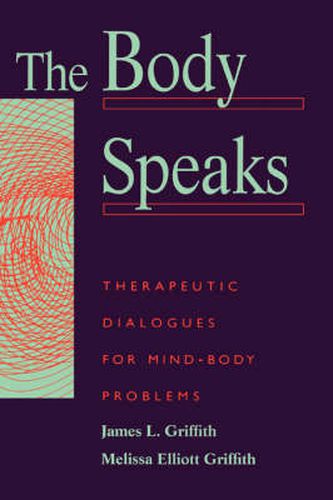Readings Newsletter
Become a Readings Member to make your shopping experience even easier.
Sign in or sign up for free!
You’re not far away from qualifying for FREE standard shipping within Australia
You’ve qualified for FREE standard shipping within Australia
The cart is loading…






For decades, health care providers have worked as though there were a monolithic wall dividing the ailments of the mind from those of the body. Theorists on either side developed separate languages and philosophies to explain symptoms. This distinction has left many clinicians unable to treat successfully patients whose symptomssuch as headaches, conversion paralysis, and seizuresarise from the place where mind and body meet. In this book, the authors describe a powerful narrative therapy, one that relies on the wisdom and everyday language of patients real-life stories instead of the expert knowledge and professional language of the clinician. This approach can be used across all categories of somatic symptoms, from factitious ones to medical illnesses such as asthma or migraine headaches. The authors show how somatic symptoms are often related to unspeakable dilemmas, as in the case of a child who, after discovering a parents marital infidelity, is afraid to disclose the secret and begins having blackout spells for which a neurologist can find no physiological basis. These dilemmas can be understood only if a clinician creates the kind of relationship in which privately held stories of fear, shame, and threat can be told safely. Detailed case studies and numerous brief examples vividly illustrate techniques for helping patients escape the dilemmas that bind their bodies by finding new language and stories that can free them. In an innovative section, the authors rethink the current ideas and practices of psychopharmacology. Rather than treating a brain disease, a clinician uses medications to recalibrate brain systems that register alarm, thereby opening new possibilities for therapeutic change through speaking, listening, reflecting, and relating. This book offers all clinicianspsychiatrists, social workers, psychologists, nurses, physicians, and family therapistsa way to use language to help patients resolve bodily symptoms. It avoids the stigmatization that patients and families so often experienceand the frustration clinicians feelwhen struggling to find answers for mind-body problems.
$9.00 standard shipping within Australia
FREE standard shipping within Australia for orders over $100.00
Express & International shipping calculated at checkout
For decades, health care providers have worked as though there were a monolithic wall dividing the ailments of the mind from those of the body. Theorists on either side developed separate languages and philosophies to explain symptoms. This distinction has left many clinicians unable to treat successfully patients whose symptomssuch as headaches, conversion paralysis, and seizuresarise from the place where mind and body meet. In this book, the authors describe a powerful narrative therapy, one that relies on the wisdom and everyday language of patients real-life stories instead of the expert knowledge and professional language of the clinician. This approach can be used across all categories of somatic symptoms, from factitious ones to medical illnesses such as asthma or migraine headaches. The authors show how somatic symptoms are often related to unspeakable dilemmas, as in the case of a child who, after discovering a parents marital infidelity, is afraid to disclose the secret and begins having blackout spells for which a neurologist can find no physiological basis. These dilemmas can be understood only if a clinician creates the kind of relationship in which privately held stories of fear, shame, and threat can be told safely. Detailed case studies and numerous brief examples vividly illustrate techniques for helping patients escape the dilemmas that bind their bodies by finding new language and stories that can free them. In an innovative section, the authors rethink the current ideas and practices of psychopharmacology. Rather than treating a brain disease, a clinician uses medications to recalibrate brain systems that register alarm, thereby opening new possibilities for therapeutic change through speaking, listening, reflecting, and relating. This book offers all clinicianspsychiatrists, social workers, psychologists, nurses, physicians, and family therapistsa way to use language to help patients resolve bodily symptoms. It avoids the stigmatization that patients and families so often experienceand the frustration clinicians feelwhen struggling to find answers for mind-body problems.